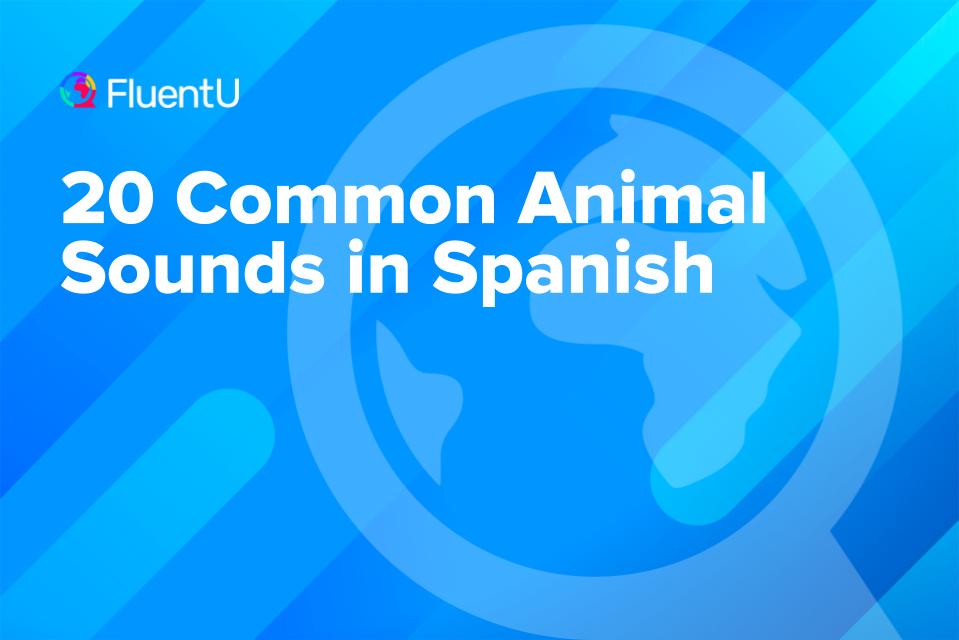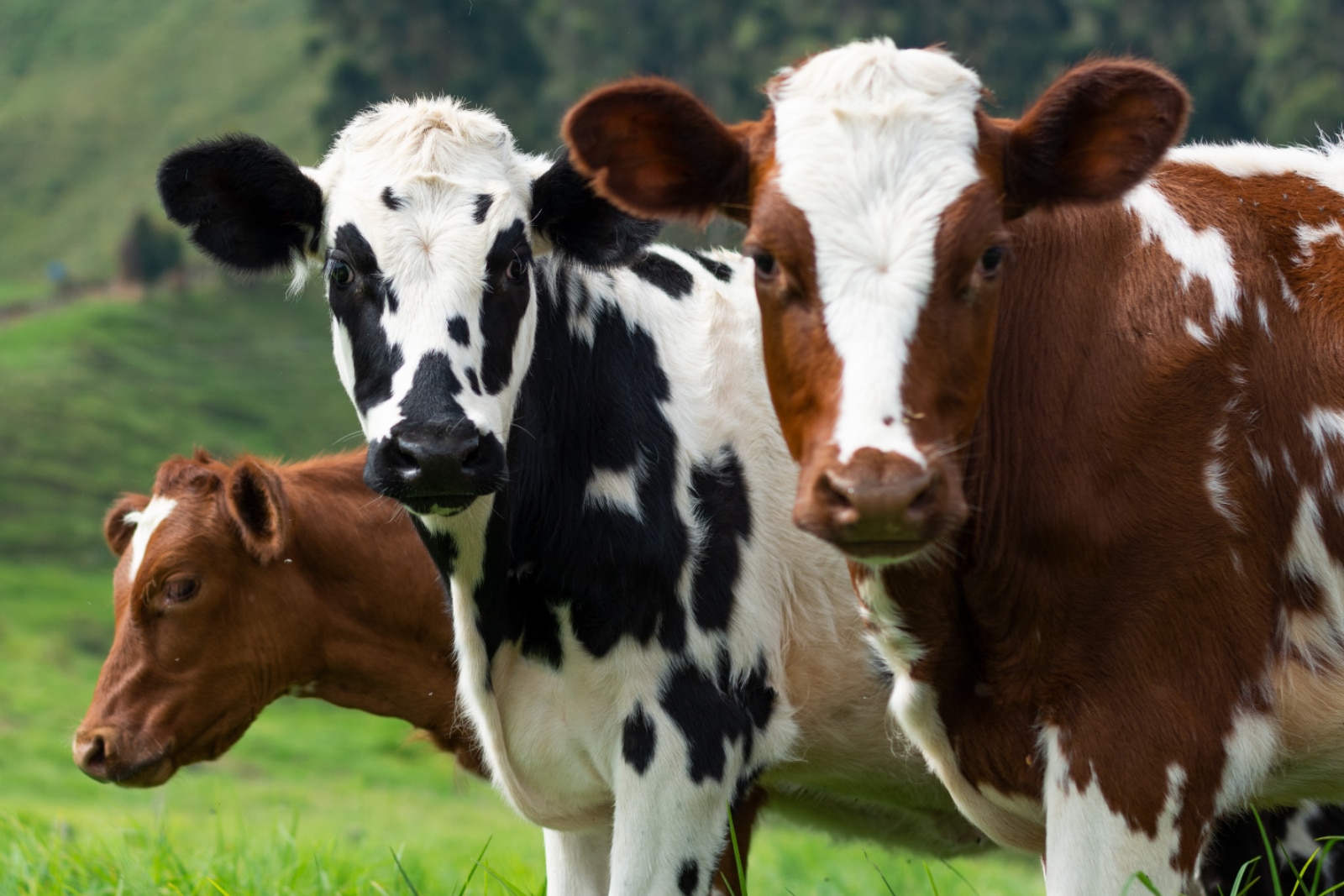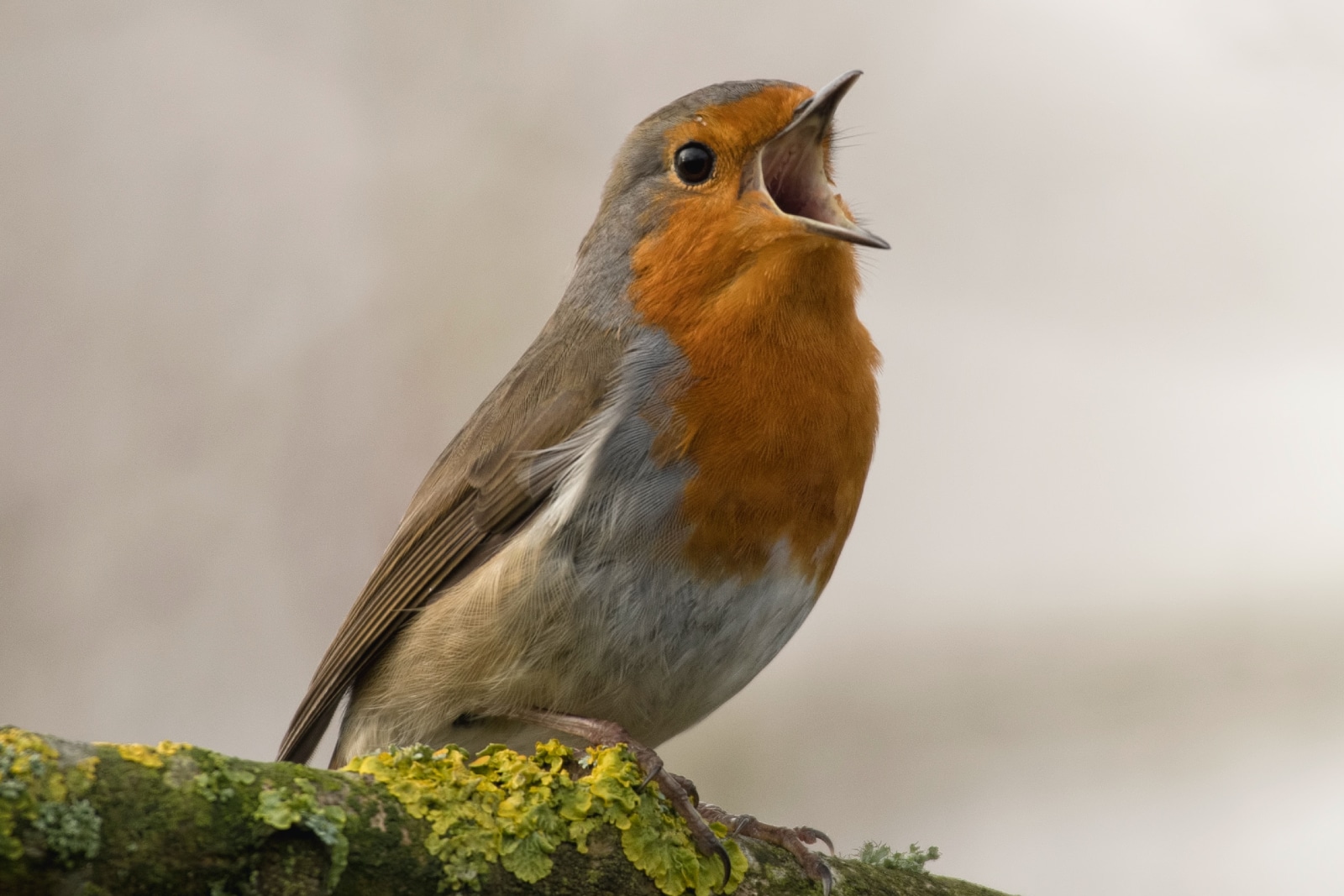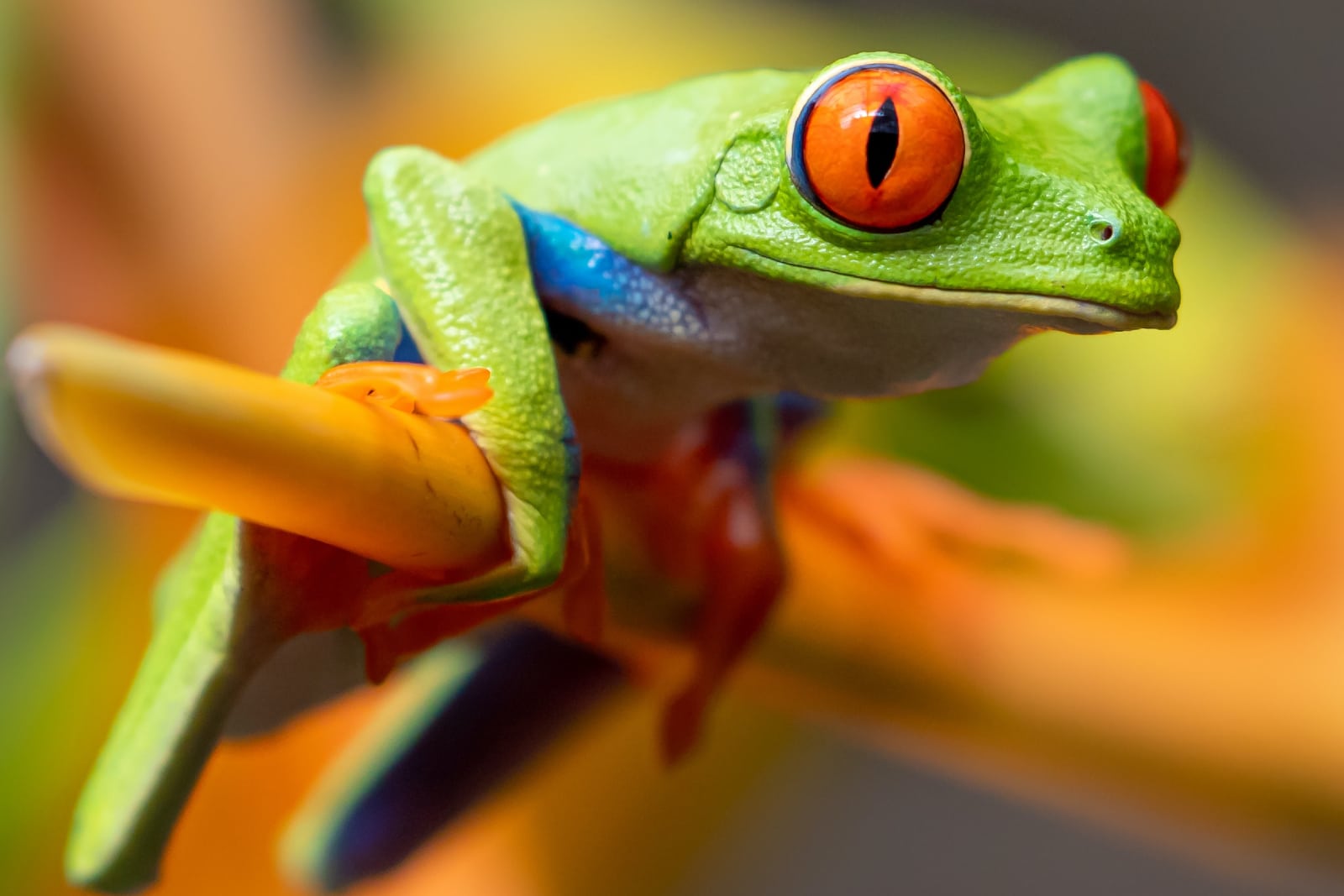20 Common Animal Sounds in Spanish

Animal sounds in different languages offer a fascinating glimpse into how language shapes the way we interpret the world around us. From the onomatopoeias that mimic these noises to the verbs that describe them, there’s a lot to learn and enjoy.
In Spanish, some terms align with English, while others may reveal subtle cultural differences in how animals are perceived and their sounds understood.
Download: This blog post is available as a convenient and portable PDF that you can take anywhere. Click here to get a copy. (Download)
What follows is my shortlist of the fauna most worth talking to, accompanied by the noises you should make when communicating with them in Spanish.
I’ve also included the verbs that describe these sounds (just like English’s “a lamb bleats,” “a horse whinnies,” etc.). At times, theses verbs and onomatopoeia provide lovely insight into how Spanish speakers hear and experience these animal sounds, and sometimes they’re just plain fun.
I’ve tried to present the sounds that are most commonly used in the whole Spanish-speaking world and use their most common spellings, but do note that there are some regional variations out there.
Now let’s meet some animals and say hello to them… in Spanish.
Farm Animal Sounds in Spanish
1. Vaca (cow) — Mu
Spanish has the same onomatopoeia for cow noises as English—their phonetic spelling of it is simply superior.
Spanish verbs for the beasts’ communication are also better. Cows can mugir (to moo), remudiar (to moo back and forth between calf and cow) and bramar (to moo loudly/angrily).
2. Gallina (hen) — Coc co co coc
The verb cacarear is also used for hens, even though their sounds (and the onomatopoeia for them) are quite different.
3. Oveja (sheep), cabra (goat) — Bee, mee
Ovejas y cabras balan (sheep and goats bleat) using the verb balar (to bleat).
4. Cerdo (pig) — Oinc-oinc
Los cerdos gruñen (pigs grunt/oink) using the verb gruñir, which also means to complain, mutter and whine.
So Spanish porkers are seen as complainers, but then, maybe they’re tired of seeing their brethren’s cured legs (jamón ibérico) hanging in every home, café, and bar.
5. Burro (donkey) — Iii-ahh
I’ve never met a language that treated donkeys with any respect. In Spanish, los burros rebuznan (the donkeys bray) and rebuznar means to loudly insult or complain, usually for no good reason.
Ser burro means to be incredibly dumb.
Bird Sounds in Spanish
6. Pájaro (bird) — Pío
A pío (that’s an accent mark, not a dot, so make sure you stress the I: “PEE-oh”) is a tweet or chirp. If you want to emphasize that you won’t reveal a secret, you can say:
No digo ni pío. (I won’t say a peep.)
The verb form is piar, and pipiar and piolar mean the same thing.
To trill or warble in your throat, whether you’re a human or a bird, is trinar, gorjear or gorgoritar.
Then, of course, there’s the activity that provides meaning to the lives of all, human and fowl alike: cantar (to sing).
7. Cuclillo (cuckoo) — Cucú
Cuclillo is a cuckoo in Spanish; when used to describe a human it means a cuckold.
8. Gallo (rooster) — Quiquiriquí, kikirikí
If you ever find yourself running dry for conversation in an international business mixer, youth hostel or airport, just ask your fellow world travelers what sound they think a rooster makes. It’s hard to top cock-a-doodle-do for aural silliness, but the Spanish quiquiriquí comes close.
The verb in Spanish is cacarear, and when you hear it used with a human as the subject it means to boast about something. For example:
Cacarea el dinero que ha gañado. (She’s bragging about the money she earned.)
9. Pato (duck) — Cuac cuac
The verb used for duck quacking is graznar, and quite fabulously it can also be used to describe high-pitched, unimportant babble sometimes emitted by humans. Here’s an example:
Graznan sus quejas. (They cry out/babble out their complaints.)
10. Paloma (dove) — Cu-curru-cu-cú, cucurrucucú
You know the dove’s sound in Spanish already if you have any taste in music or movies. My favorite is the Caetano Veloso version of this song, as used in the film “Hable con ella” (“Talk to Her”).
If you’re not done crying, check out the Lila Downs version too.
Fittingly, the verb for describing doves’ noises, arrullar, means to talk softly and/or lovingly, as with the English “to coo.”
11. Búhos (owl) — Uu uu
Los búhos ululan (owls hoot). The wind, in Spanish, doesn’t howl—it also hoots: El viento ulula.
12. Cuervo (crow) — Cruaaac-cruaac
Los cuervos graznan (crows caw). You’ll notice that in spite of their very different sounds, they’ve been assigned the same verb as ducks (graznar).
13. Pavo (turkey) — Gluglú
As with English, Spanish has a ridiculous-sounding verb for this ridiculous animal’s ridiculous noises: gluglutear (to gobble).
Zoo Animal Sounds in Spanish
14. Lobo (wolf) — Aúúú
Wolves’ speech is described with aullar (to howl) and also, as in English, una persona aulla de dolor (a person howls in pain). Otilar and guarrear are additional verb options for wolf howls.
15. Tigre (tiger) — Grgrgrgr
Los tigres rugen (the tigers roar) employs the verb rugir (to roar). Angry humans and even the heavens can be said to roar using this verb as well, for example:
La tempestad ruge. (The storm is roaring.)
16. Mono (monkey) — I-i-i
Los monos chillan (monkeys screech). The verb chillar is very common in Spanish for describing human shouting, shrieking and yelling too:
Le chillé para que se callara. (I screamed at her so that she would shut up.)
Other Animal Sounds in Spanish
17. Rana (frog) — Croá, croá
Las ranas croan (frogs croak), of course.
But what about that sexy/scary/creepy way that some old (and even occasionally young) Andalusian men hack out syllables through the cigarette tar lining their throats?
In English we’d say that they croak, and the figurative use of croar is fine in Spanish as well. Ellos croan (they croak) can also be used for talking about anyone who is hoarse.
18. Perro (dog) — Guau
We live with, love and communicate with dogs all the time, so it’s no surprise that we have lots of verbs for the types of noises that they produce. In Spanish, they are:
ladrar — to bark; when talking about humans, to make noises without follow-through, to bluster
gañir — to yelp, howl
regañir — to repeatedly yelp
gruñir — to growl menacingly
aullar — to howl
arrufarse — to bark menacingly while showing teeth
19. Gato (cat) — Miau
Cats can maullar or mayar (to meow), bufar (to hiss; for humans it means to seethe), fufar (also to hiss), ronronear (to purr) and marramizar (to howl, caterwaul).
20. Abeja (bee) — Bzzzz
Las abejas zumban (bees buzz). The verb zumbar also means to hit, slap, thump or whack someone. Thus, in the video below, la abeja no zumba in any sense, but rather, Burns zumba a la abeja:
I know that these sounds will prove useful for you on the farms and fields of Spanish-speaking lands.
But of course, you’ll have to hear and not just read these sounds. So if you don’t have a Spanish speaker around to coach you on your animal vocalizations, you can opt for Spanish audio or videos.
This song from Sing with Señor is a great way to familiarize yourself with some of the most common animal sounds:
You can also find videos in many places online or included with language learning programs like FluentU, which equips Spanish video and audio clips with interactive tools so you can practice listening, reading and speaking skills altogether.
FluentU takes authentic videos—like music videos, movie trailers, news and inspiring talks—and turns them into personalized language learning lessons.
You can try FluentU for free for 2 weeks. Check out the website or download the iOS app or Android app.
P.S. Click here to take advantage of our current sale! (Expires at the end of this month)

I hope that this guide has helped you familiarize yourself with Spanish animal sounds, so that you’ll be able to identify them when they appear in a range of different contexts!
Download: This blog post is available as a convenient and portable PDF that you can take anywhere. Click here to get a copy. (Download)
And One More Thing…
If you've made it this far that means you probably enjoy learning Spanish with engaging material and will then love FluentU.
Other sites use scripted content. FluentU uses a natural approach that helps you ease into the Spanish language and culture over time. You’ll learn Spanish as it’s actually spoken by real people.
FluentU has a wide variety of videos, as you can see here:

FluentU brings native videos within reach with interactive transcripts. You can tap on any word to look it up instantly. Every definition has examples that have been written to help you understand how the word is used. If you see an interesting word you don’t know, you can add it to a vocab list.

Review a complete interactive transcript under the Dialogue tab, and find words and phrases listed under Vocab.

Learn all the vocabulary in any video with FluentU’s robust learning engine. Swipe left or right to see more examples of the word you’re on.

The best part is that FluentU keeps track of the vocabulary that you’re learning, and gives you extra practice with difficult words. It'll even remind you when it’s time to review what you’ve learned. Every learner has a truly personalized experience, even if they’re learning with the same video.
Start using the FluentU website on your computer or tablet or, better yet, download the FluentU app from the iTunes or Google Play store. Click here to take advantage of our current sale! (Expires at the end of this month.)











